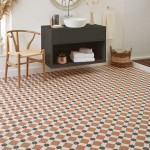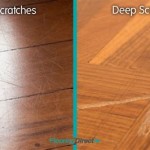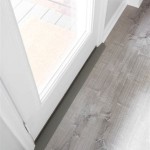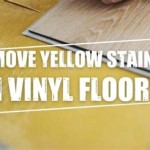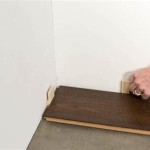What Kind of Laminate Flooring is Best for a Kitchen?
Selecting the right flooring for a kitchen requires careful consideration due to the room's unique demands. Kitchens are exposed to spills, moisture, heavy foot traffic, and potential impacts from dropped items. Laminate flooring, a popular alternative to hardwood and tile, can be a suitable choice if the appropriate type and quality are selected. This article will delve into the characteristics of laminate flooring that make it suitable for kitchens, highlighting essential features to look for and potential drawbacks to consider.
Laminate flooring is a multi-layered synthetic flooring product fused together through a lamination process. The core layer is typically made of high-density fiberboard (HDF) or medium-density fiberboard (MDF), providing stability and strength. An image layer, replicating the look of wood, stone, or tile, is applied atop the core. Finally, a wear layer, a transparent protective coating, shields the image layer from scratches, stains, and fading. The quality and characteristics of these layers determine the overall durability and suitability of laminate flooring for the challenging environment of a kitchen.
Water Resistance and Spill Protection
One of the most crucial factors to consider when selecting laminate flooring for a kitchen is its water resistance. While no laminate flooring is completely waterproof, some options offer superior protection against moisture compared to others. The core layer is particularly vulnerable to water damage. When exposed to moisture, HDF or MDF can swell, warp, and delaminate, compromising the structural integrity of the flooring. Therefore, selecting laminate flooring with a moisture-resistant core is paramount.
Several manufacturers offer laminate flooring specifically designed for wet areas, often labeled as "water-resistant" or "waterproof." These products typically incorporate a tightly sealed core and a surface coating that repels water. The seams between planks are also often treated with a sealant to prevent moisture from seeping through. "Water-resistant" laminate offers a degree of protection against spills and splashes for a limited time, typically ranging from 24 to 72 hours. It is important to clean up spills promptly to prevent water from penetrating the seams and damaging the core. "Waterproof" laminate, on the other hand, is designed to withstand prolonged exposure to water without damage. These products typically feature a completely waterproof core made of materials like PVC or specialized polymers.
When evaluating the water resistance of laminate flooring, pay close attention to the manufacturer's specifications and warranty. Look for products that have been tested and certified to meet industry standards for water resistance, such as the North American Laminate Flooring Association (NALFA) certification. It is also wise to examine the installation instructions carefully to ensure that the flooring is installed properly to maximize its water resistance. Proper sealing around the perimeter of the room and around pipes or other fixtures is essential to prevent water from seeping beneath the flooring.
Durability and Wear Layer Thickness
The thickness of the wear layer is a significant indicator of the laminate flooring's durability and its ability to withstand daily wear and tear in a high-traffic kitchen. The wear layer is the top surface coating that protects the underlying image layer from scratches, dents, stains, and fading. A thicker wear layer provides greater protection and extends the lifespan of the flooring. Wear layer thickness is typically measured in mils (thousandths of an inch). For kitchens, it is recommended to select laminate flooring with a wear layer of at least 12 mils.
Laminate flooring is rated using the Abrasion Criteria (AC) rating system, which measures its resistance to abrasion and wear. The AC rating scale ranges from AC1 to AC5, with AC1 being suitable for light residential use and AC5 being suitable for heavy commercial use. For kitchens, an AC3 or AC4 rating is generally recommended. AC3-rated laminate is suitable for heavy residential use and light commercial use, while AC4-rated laminate is suitable for general commercial use. These ratings indicate that the flooring can withstand the challenges of a busy kitchen environment, including heavy foot traffic, dropped items, and regular cleaning.
The core construction also plays a role in the overall durability of the laminate flooring. HDF cores are generally denser and more durable than MDF cores, making them a better choice for kitchens. The density of the core affects its resistance to impacts and its ability to maintain its shape over time. A denser core will also provide better support for the wear layer, preventing it from cracking or chipping under pressure.
Style and Design Considerations
While durability and water resistance are paramount, the aesthetic appeal of the laminate flooring is also an important consideration. Laminate flooring is available in a wide range of styles, colors, and textures, allowing homeowners to create the desired look for their kitchen. Laminate flooring can mimic the appearance of hardwood, tile, or stone, offering a cost-effective alternative to these materials.
When selecting a style, consider the overall design of the kitchen and the desired aesthetic. Wood-look laminate flooring can add warmth and character to a kitchen, while tile-look laminate flooring can create a more modern and sophisticated look. Stone-look laminate flooring can provide a natural and rustic feel. The color of the flooring can also significantly impact the overall ambiance of the kitchen. Lighter colors can make a small kitchen feel larger and brighter, while darker colors can create a more cozy and intimate atmosphere.
The texture of the laminate flooring can also enhance its visual appeal. Embossed-in-register (EIR) laminate flooring features a textured surface that aligns with the underlying image, creating a more realistic and tactile experience. For example, wood-look laminate with EIR texture will have a surface that mimics the grain and texture of real wood. Smooth laminate flooring, on the other hand, has a more uniform and modern appearance. Consider the overall design of the kitchen and the desired texture when selecting laminate flooring.
The plank size and layout can also affect the visual impact of the flooring. Wider planks can create a more spacious and luxurious look, while narrower planks can provide a more traditional and intricate feel. Laying the planks diagonally can also add visual interest to the kitchen. It is advisable to consult with a flooring professional or use online design tools to visualize how the different styles, colors, and layouts will look in the kitchen before making a final decision.
Furthermore, it's beneficial to acquire samples of potential laminate flooring options and observe them in the kitchen under various lighting conditions. This allows for assessment of how well the flooring complements existing cabinetry, countertops, and wall colors. Taking into account the kitchen's natural and artificial lighting can prevent unexpected color variations after installation.
In summary, selecting the best laminate flooring for a kitchen involves careful evaluation of water resistance, durability, and aesthetic appeal. Prioritizing features such as a water-resistant or waterproof core, a thick wear layer (at least 12 mils), an appropriate AC rating (AC3 or AC4), and a style that complements the kitchen's design will contribute to a successful and long-lasting flooring solution.

5 Best Laminate Flooring For Your Kitchen

How To Choose The Best Flooring For Your Kitchen Carpet Go

The Best Kitchen Floors On A Budget Flooring

Types Of Laminate Flooring The Home Depot

Kitchen Laminate Flooring Home Pros

How To Choose The Best Kitchen Floor Flooring Inc

Best Wood Flooring For Kitchens Blog Floorsave

Laminate Flooring Types And S Forbes Home

Best Flooring For Kitchen Direct

5 Kitchen Flooring Types And Which Is Best For You Igloo Surfaces
Related Posts

